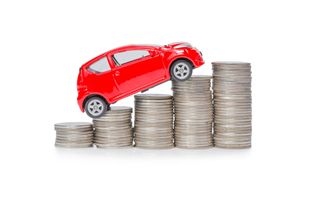(Finance) – In April have been registered 135,353 cars compared to 125,884 registrations recorded in the same month of the previous year, equal to an increase of 7.52%. MIT announced this, explaining that there were 446,631 property transfers compared to 370,132 transfers recorded in April 2023, with an increase of 20.67%. The global volume of monthly sales, equal to 581,984, concerned 23.26% of new cars and 23.26% of 76.74% used cars.
The registrations represent the findings of the National Vehicle Archive as of 30.4.2024, while the data relating to transfers of ownership refer to the certifications issued by the Motorization Offices in the month of April 2024.
“A strengthened macroeconomic framework and a better-than-expected first quarter for car registrations lead to an upward revision of the estimate for the market in 2024 by 30,000 units, with a total volume expected at the end of the year of 1,630,000 cars, growing of approximately 63,500 units in 2023 (+4.1%). However, the comparison with the pre-pandemic period still shows a gap of
15.0% on 2019″, this is the comment of the President of UNRAE Michele Crisci.
“On the front of cars “with the plug” – continues Michele Crisci – we proceed in reverse instead. The prolonged wait for the incentives, which will not be law before mid-May, reduces the effects on the market to the last 4 months and also extends the market paralysis for BEVs and PHEVs into April: in the month the former stopped at 2.3% of share and the latter at 3.3%”. For the development of zero and very low emission mobility, therefore, UNRAE insists on the extreme urgency of publishing the Prime Ministerial Decree announced three months ago in the Official Journal,
and to make the Invitalia platform immediately operational. But he also reiterates, once again, the need to correct the new incentive scheme, although already improving:
“We believe it is necessary that the price cap on cars 0-20 g/Km be eliminated or at least equated to that of the 21-60 g/km range”, remarks the President Michele Crisci, adding “it is then necessary for the Government to accompany this transition in a structural way, giving consumers and operators a clear visibility on the incentive program for the next 2-3 years”. A further enabling factor to promote the energy transition – as UNRAE has been repeating for years – it’s the review of the tax treatment of company cars in mixed use, acting on VAT deductibility and cost deductibility based on CO2 emissions and reducing the 3 year amortization period.
“This measure – proposes Crisci – it can be achieved through the implementing decrees of the Fiscal Delegation, in order to relaunch the competitiveness of our companies in every product sector and enhance the contribution that they can, with the rapid turnover of company vehicles,
provide to accelerate the renewal of the fleet”.
“In April 2024, The Italian car market gets back to having the positive sign after the slowdown in March (-3.7%), with an increase of 7.5%, thanks to two more working days compared to April 2023 (20 days against 18) – states Roberto Vavassori, President of ANFIA – but a large gap remains to be filled compared to to pre-pandemic volumes (-22.4% compared to April 2019)
Interest rates still high and the economic uncertainty of families in general they do not help to reach a level of registrations that allows European environmental objectives to be achieved. Furthermore, the serious delay in the implementation of the rule on new incentives it adds to the factors that paint a less than positive picture for the sector. The offer of low and no local emission models increases the possibility of choice for buyers, but this seems not to be sufficient to bring the market back to the levels necessary for an effective renewal of the Italian fleet, among the oldest and most polluting in Europe”.
(Photo: © Sittipong Leetangwattana / 123RF)
